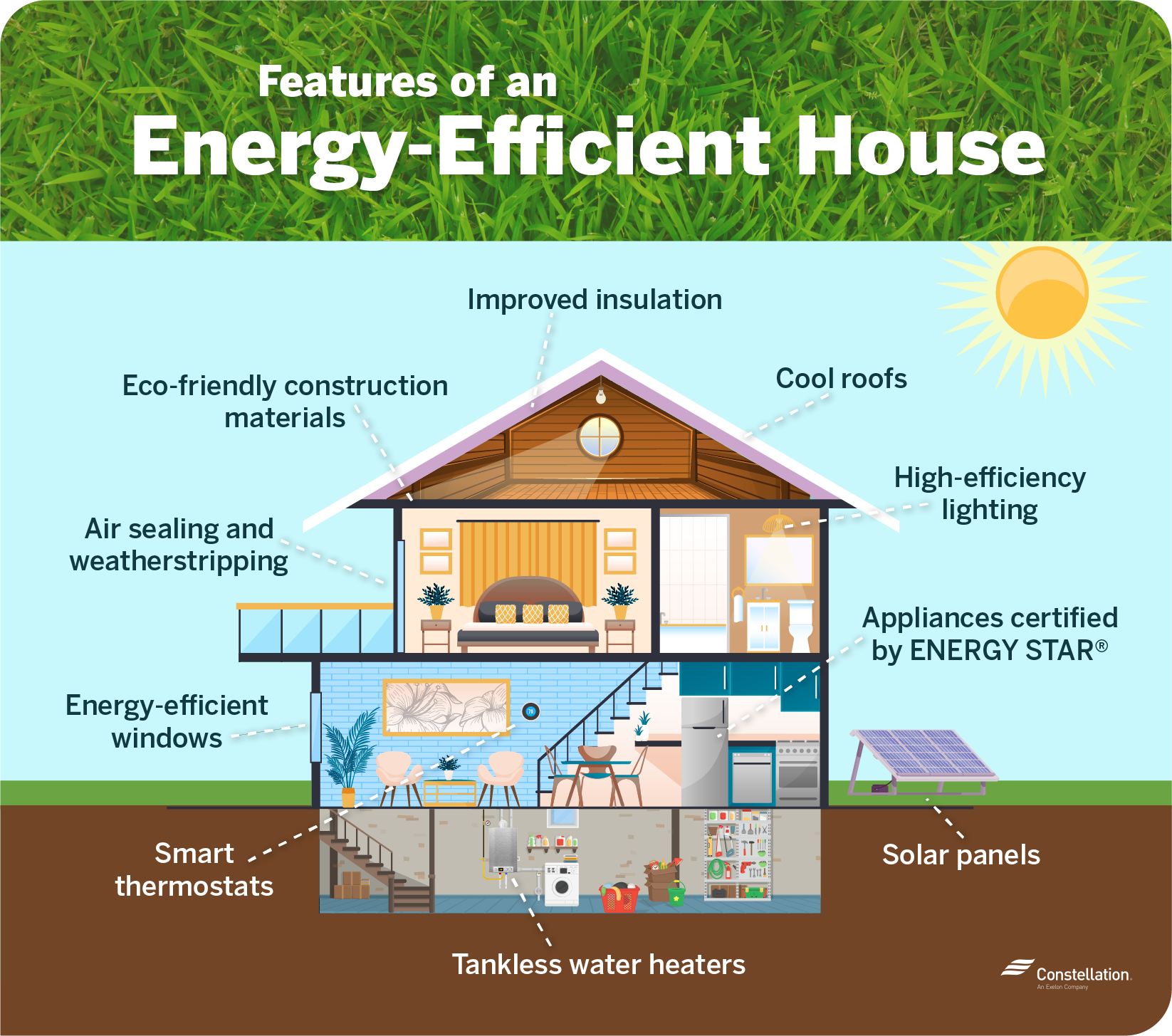Rise by Six: Your Daily Dose of Inspiration
Explore insights and stories that elevate your day.
Green Dreams: Transform Your Home Into an Energy-Efficient Oasis
Discover easy tips to turn your home into an energy-efficient oasis and save money while saving the planet! Start your green journey today!
10 Simple Steps to Make Your Home More Energy-Efficient
Improving your home's energy efficiency can lead to lower utility bills and a smaller carbon footprint. Here are 10 simple steps to help you achieve a more energy-efficient home:
- Start with a home energy audit to identify areas for improvement.
- Seal any leaks in windows and doors using weatherstripping or caulking.
- Upgrade to energy-efficient LED lighting throughout your home.
- Insulate your attic and walls to reduce heat loss.
- Invest in energy-efficient appliances that consume less power.
Continuing with our list, consider the following steps to further enhance your energy efficiency:
- Utilize programmable thermostats to optimize heating and cooling.
- Install low-flow fixtures to conserve water.
- Choose energy-efficient windows or apply window film to reduce drafts.
- Use power strips to easily turn off electronics when not in use.
- Embrace renewable energy options, such as solar panels, if feasible.

The Benefits of an Energy-Efficient Home: Save Money and the Planet
Creating an energy-efficient home offers numerous advantages for homeowners, both financially and environmentally. First and foremost, energy-efficient homes significantly reduce utility bills by minimizing energy consumption. According to estimates, homeowners can save up to 30% on energy costs through upgraded insulation, energy-efficient appliances, and smart home technology. These savings can be redirected towards other important expenses or simply enjoyed as extra disposable income.
In addition to saving money, energy-efficient homes contribute positively to the planet by lowering overall carbon emissions. By reducing energy consumption, homeowners help decrease the demand for fossil fuels, which are major contributors to environmental degradation and climate change. Implementing energy-efficient practices not only fulfills a personal financial goal but also demonstrates a commitment to sustainability. As more people adopt these practices, the collective impact can lead to a significant reduction in our carbon footprint, promoting a healthier planet for future generations.
How to Choose Sustainable Materials for Your Home Renovation
When embarking on a home renovation, selecting sustainable materials is crucial for reducing your environmental footprint. Begin by evaluating your project's needs; consider materials that are locally sourced, recycled, or certified by reputable organizations. For instance, look for FSC-certified wood, which ensures that the timber is harvested sustainably. Additionally, prioritize materials that are durable and have a long lifespan, as this not only contributes to sustainability but also saves money in the long run.
Another significant factor to consider is the energy efficiency of the materials chosen. Opt for insulation products made from reclaimed or natural materials, such as sheep's wool or cellulose, which can reduce energy consumption in your home. When selecting finishes, such as paint or flooring, look for low-VOC or no-VOC options to enhance indoor air quality. By choosing sustainable materials thoughtfully, you not only support environmental health but also create a comfortable and stylish living space.